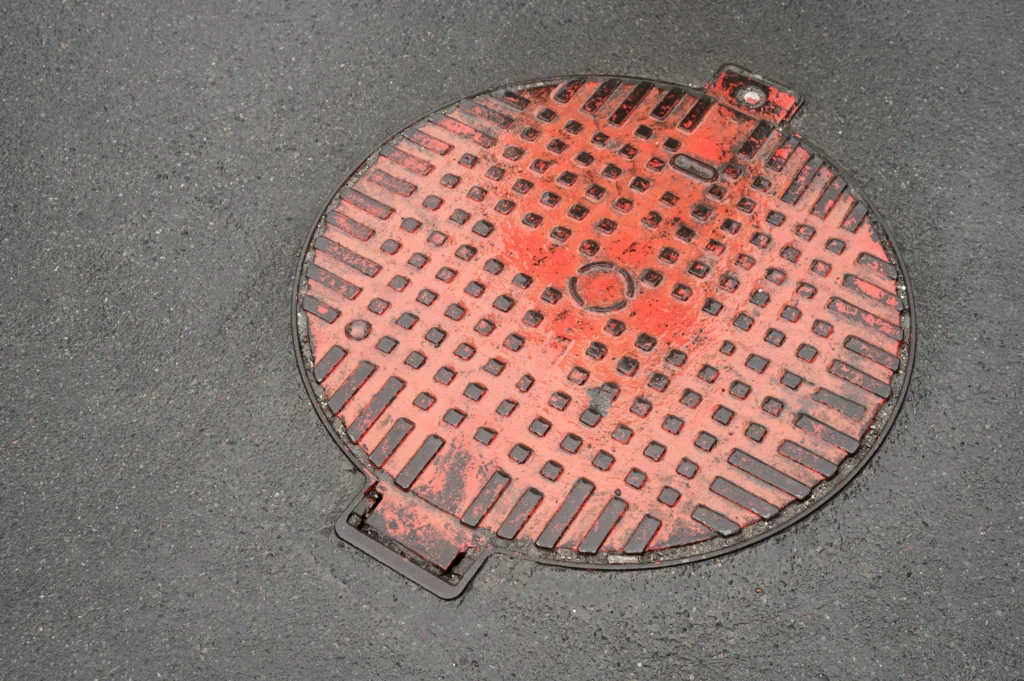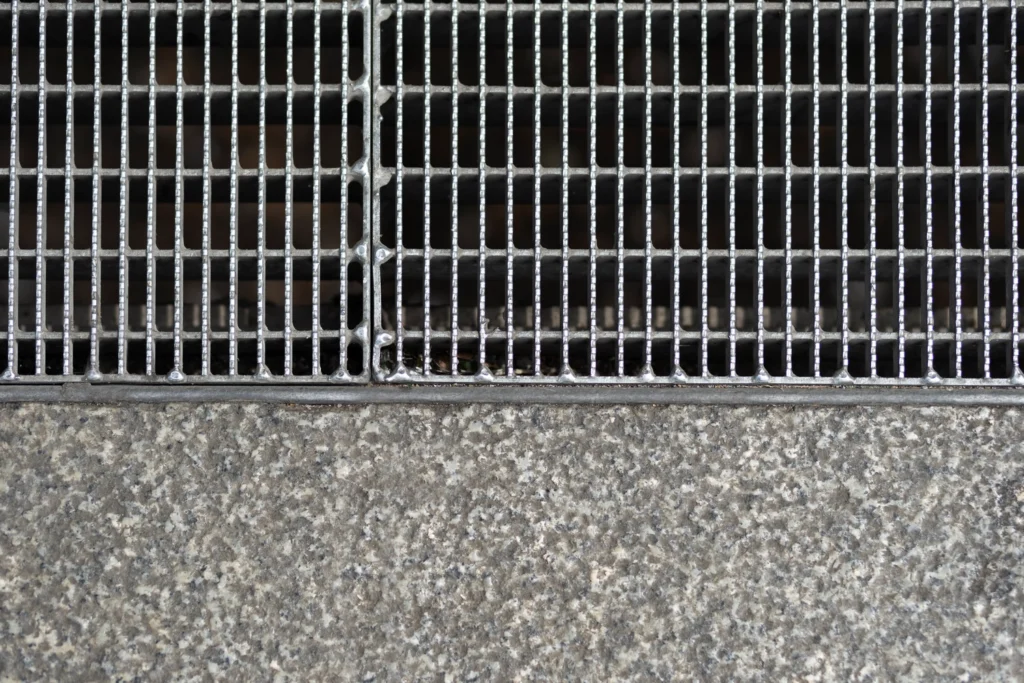A well-designed drainage system lives or dies by its catch basins. When a basin fails, water has nowhere to go—pooling on pavements, undermining subgrades, and accelerating surface damage. If you’ve ever wondered why cracks spread after every storm or why a once-flat area starts to sink, the root cause is often poor drainage and neglected catch basins. The role of a catch basin goes beyond simply collecting water; it’s a frontline defense against the destructive effects of water on your pavement and infrastructure. Neglecting it can lead to costly damage not just to asphalt surfaces, but also to building foundations, landscaping, and surrounding property. This makes regular inspection and repair essential for both functional and financial reasons. If your pavement already shows distress, pair your drainage plan with expert asphalt repair to restore performance end-to-end.
Table of Contents
- What Is a Catch Basin and How Does It Work?
- Common Signs You Need Catch Basin Repair
- Main Causes of Catch Basin Deterioration
- How to Repair a Catch Basin?
- What Are the Disadvantages of a Catch Basin?
- How Often Do Catch Basins Need to Be Cleaned?
- Professional Catch Basin Repair and Maintenance Services
- Conclusion: Protect Your Property with Regular Catch Basin Care

What Is a Catch Basin and How Does It Work?
Definition and Function of a Catch Basin
A catch basin is a grated inlet connected to a drainage box that intercepts runoff. As water enters, heavier sediment settles to the bottom while clearer water exits through an outlet pipe to the storm system. The basin’s job is twofold: protect the network from debris and move water off hard surfaces before it can cause damage. Without this mechanism, debris such as leaves, gravel, and trash would flow directly into pipes, causing blockages and backups. Additionally, catch basins help prevent water from accumulating in low spots, reducing the risk of standing water that can freeze in winter, creating dangerous icy conditions. They are especially important in high-traffic commercial areas, where both pedestrian safety and asset longevity are top priorities. By removing sediment from runoff, they also contribute to cleaner downstream waterways, which is an often-overlooked environmental benefit.
Difference Between Catch Basins, Storm Drains, and Storm Sewers
In casual speech, these terms blur together, but technically: a catch basin is the inlet structure; a storm drain is the curbside intake assembly that often includes the basin; and the storm sewer is the pipe network carrying water away. Understanding the distinction helps specify repairs precisely and communicate effectively with contractors. Misidentifying the component can lead to incomplete or incorrect repairs, resulting in wasted time and budget. In a professional setting, accuracy matters—knowing the exact term ensures you get the right service and avoid misunderstandings during maintenance projects. Furthermore, the different components may require different inspection schedules and repair techniques, making it vital to identify each correctly. Clarity in terminology also makes it easier to coordinate Commercial Property Maintenance plans that include all parts of the drainage system.
Key Components of a Catch Basin System
Typical elements include a grate, frame, concrete or precast structure, sump (sediment storage), outlet pipe placed mid-height, and surrounding pavement or curb. Failures in any component—especially settlement at the frame or cracking around the box—can compromise the entire area. The grate must be structurally sound to handle vehicle loads, while the sump needs to remain deep enough to trap sediment efficiently. The outlet pipe’s position is crucial to prevent debris from being carried downstream. Even minor damage to the surrounding pavement can channel water improperly, undermining the basin’s function. Regularly checking each element ensures the catch basin can perform optimally and prevents the need for more extensive repairs later.
Common Signs You Need Catch Basin Repair
Spotting issues early is the key to minimizing repair costs and avoiding safety hazards. Common indicators of trouble include visible pooling water after rainfall, uneven pavement around the grate, foul odors, or vegetation overgrowth near the inlet. Water infiltration into nearby structures is another serious sign that your drainage system isn’t performing correctly. If you notice small sinkholes, it’s often an indicator of soil erosion caused by leaking joints or broken pipes connected to the basin. Acting quickly when these warning signs appear can prevent the need for full structural replacement and protect your investment in paving.
Main Causes of Catch Basin Deterioration
Catch basins are exposed to a variety of stresses over time. Clogging from sediment and debris is the most common problem, reducing water flow and leading to surface flooding. Erosion of the mortar or concrete that secures the basin can cause the frame to shift or sink, creating trip hazards and damaging surrounding asphalt. Harsh Canadian freeze-thaw cycles exacerbate small cracks, turning them into major failures. Pipes leading from the basin can also corrode or collapse, cutting off drainage entirely. Preventive maintenance—particularly regular cleaning and inspection—remains the best defense against these issues.
How to Repair a Catch Basin?
Repair begins with a thorough inspection to determine whether the issue lies within the basin itself, the outlet pipe, or the surrounding pavement. Professionals often use CCTV cameras to assess internal conditions without excavation. Cleaning is usually the first step, employing hydro-jetting and vacuum extraction to remove sediment and restore flow. Minor repairs may involve re-setting the grate frame or rebuilding the upper section of the basin, while more serious damage could require complete reconstruction. In some cases, trenchless repair methods such as CIPP lining are used to rehabilitate pipes without disturbing the surrounding area. Once the drainage function is restored, surface restoration—often involving targeted asphalt repair—is critical to sealing cracks and preventing water intrusion.
What Are the Disadvantages of a Catch Basin?
While catch basins are vital for managing runoff, they do come with certain drawbacks. Without regular maintenance, they can clog and cause localized flooding, undermining the very surfaces they are designed to protect. Repairs can be costly if deterioration is allowed to progress unchecked, especially when pipe replacement or structural rebuilding is required. Poorly functioning basins can also allow pollutants to enter waterways, posing environmental risks. However, with consistent inspection as part of your Commercial Property Maintenance program, these disadvantages can be minimized, ensuring the basin remains a reliable asset rather than a liability.

How Often Do Catch Basins Need to Be Cleaned?
Most experts recommend cleaning catch basins at least once a year, with more frequent servicing in areas that see heavy debris accumulation or high rainfall. In Canada, an ideal schedule includes one cleaning in spring—after snowmelt and sand accumulation—and another in late fall, after leaves have dropped. The frequency should be adjusted based on visual inspections and measured sediment depth in the sump. Proactive maintenance not only prevents flooding but also extends the life of surrounding pavement, reducing the need for emergency asphalt repair. A clean catch basin is a functional catch basin, and function is the key to long-term surface preservation.
Professional Catch Basin Repair and Maintenance Services
Hiring experienced contractors ensures that repairs are performed to a high standard, using the right tools and techniques for each situation. Professional teams can identify root causes faster, implement long-lasting solutions, and provide preventative maintenance programs tailored to your site’s needs. Services typically include inspections, sediment removal, frame adjustment, concrete repair, and trenchless pipe rehabilitation. Integrating these tasks into a broader Commercial Property Maintenance plan keeps your entire property in top condition and prevents small problems from becoming major liabilities.
Conclusion: Protect Your Property with Regular Catch Basin Care
Catch basins are a critical element in controlling water flow and protecting your property’s infrastructure. Regular cleaning, timely repairs, and integration with overall property maintenance strategies are essential to keep them functioning effectively. Neglect can lead to flooding, surface damage, environmental hazards, and costly repairs. Protecting your drainage system is protecting your investment—every building, pavement, and landscaped area depends on it.
Looking for reliable, expert catch basin repair and maintenance in Canada? Contact Prozone Ltd today to schedule a consultation. Our team offers comprehensive inspection, repair, and preventative services to keep your drainage systems performing at their best, all year round.
For more technical guidelines on drainage infrastructure and standards for catch basin repair, you can refer to the American Association of State Highway and Transportation Officials, which provides detailed resources for professionals in the field.
